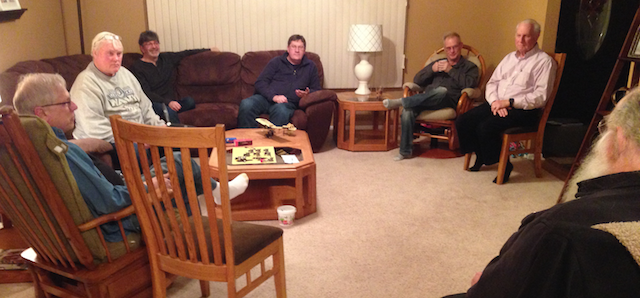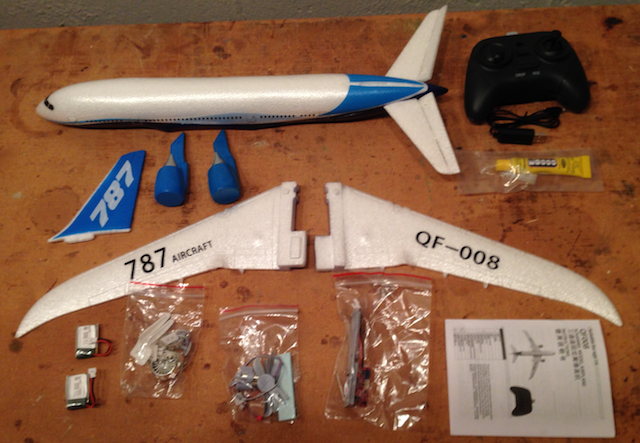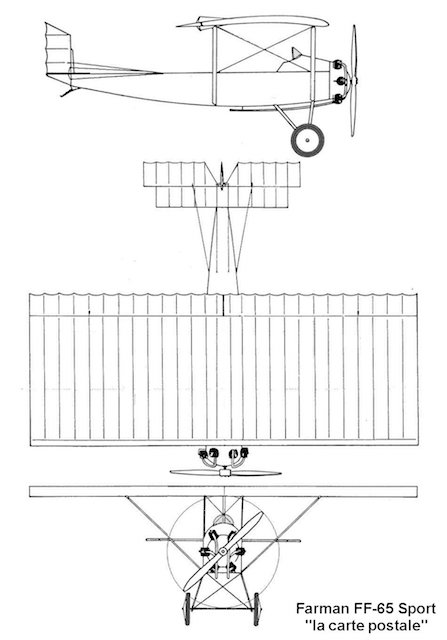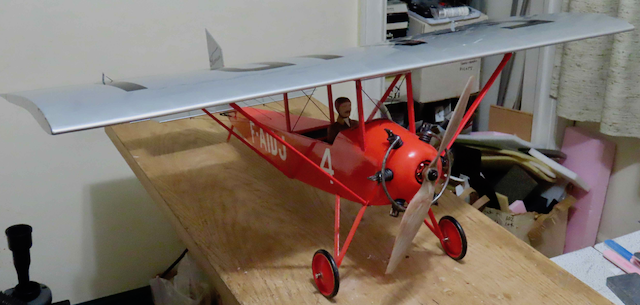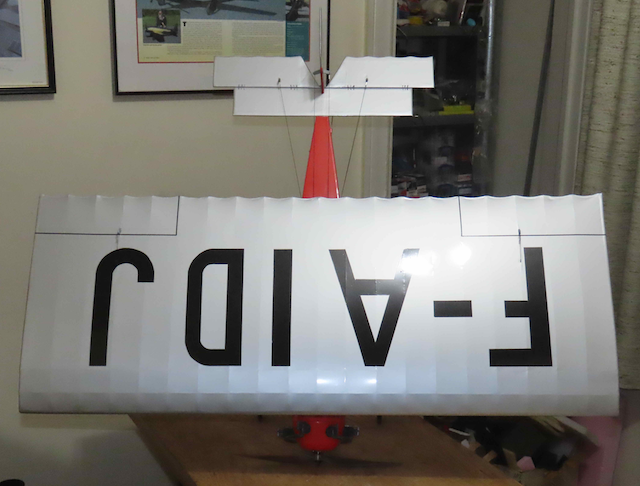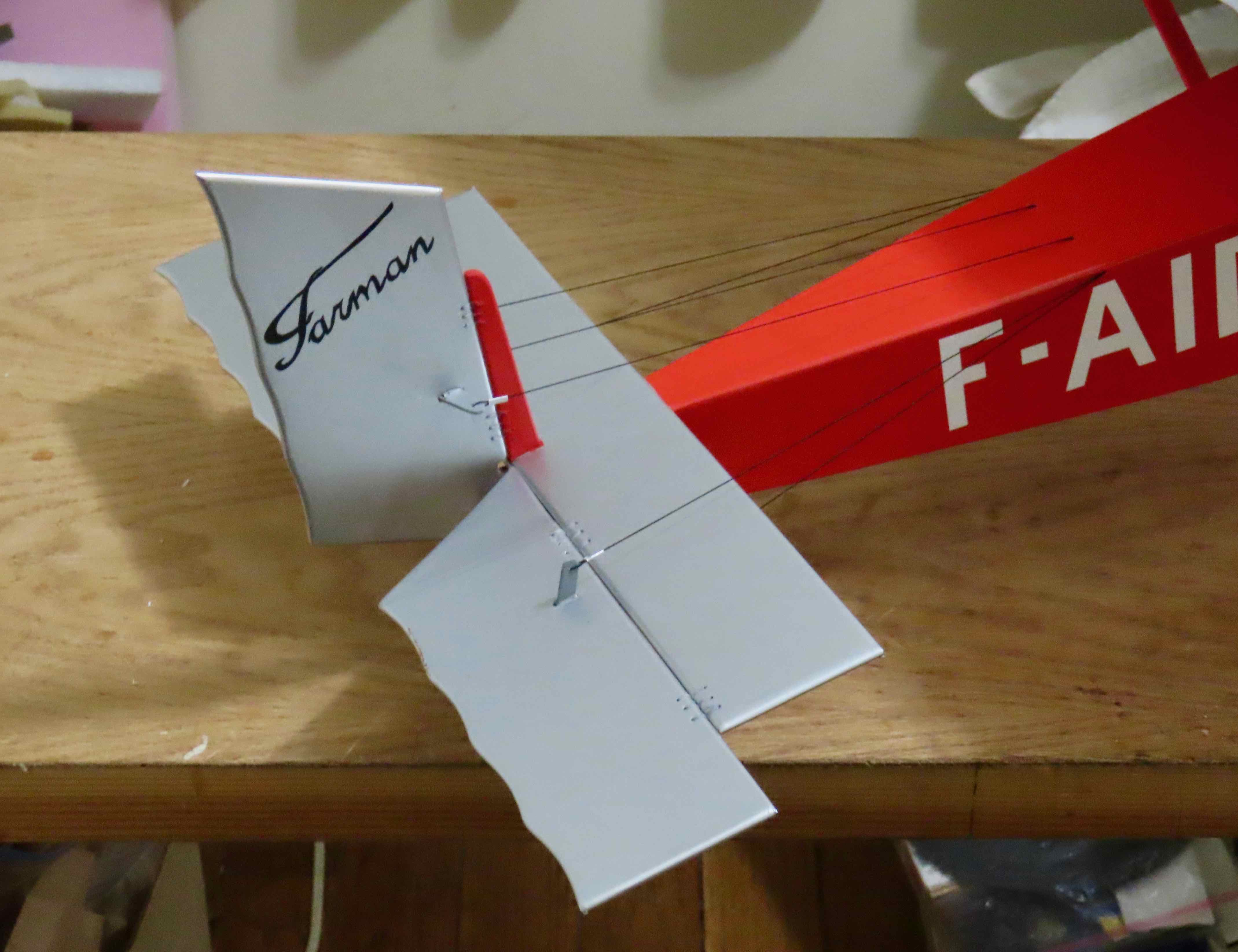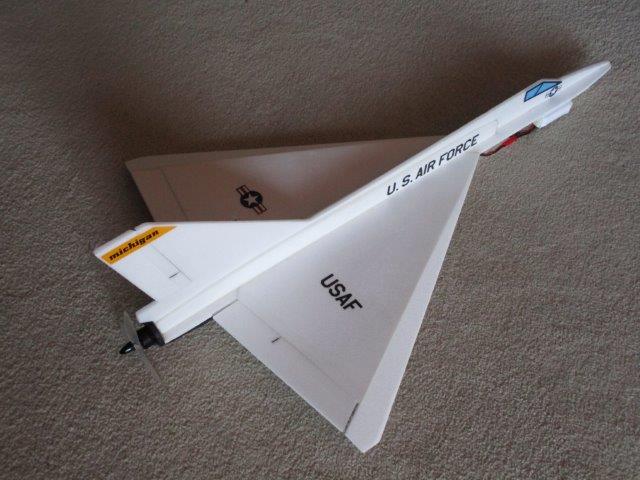 |
Flying High With Electric Power!
The Ampeer ON-LINE!
Fly the Future - Fly Electric! |
|---|
Site Table of Contents
| President: | Vice-President: | Secretary-Treasurer: |
| Ken Myers | Keith Shaw | Rick Sawicki |
| 1911 Bradshaw Ct. | 2756 Elmwood | 5089 Ledgewood Ct. W. |
| Commerce Twp., MI 48390 | Ann Arbor, MI 48104 | Commerce Twp., MI 48382 |
| (248) 669-8124 | (734) 973-6309 | (248) 685-7056 |
 | ||
| Board of Directors: | Board of Directors: | Ampeer Editor |
| David Stacer | Arthur Deane | Ken Myers |
| PO Box 75313 | 21690 Bedford Dr. | 1911 Bradshaw Ct. |
| Salem, MI 48175 | Northville, MI 48167 | Commerce Twp., MI 48390 |
| (313) 318-3288 | (248) 348-2058 | (248) 669-8124 |
| Saturday, September 5 EFO Meeting: Midwest RC Society 7 Mi. Rd. Flying Field Time: 10:00 a.m.
Place: Midwest RC Society 7 Mile Rd. Salem Township, MI Phone: 248-669-8124 Everyone with an interest is WELCOME Proof of AMA membership required to fly | ||
| The June 2020 EFO Flying Meeting Notes and information from the June flying meeting. | The February 2020 EFO Meeting Notes and information from the February 2020 EFO meeting. |
| How To Calculate Oddly Shaped Wing Areas Ken Myers explains his method. | A New Hatchling, the French Farman "Carte Postale" Keith Shaw sent photos and info on his latest project, and shares them here. |
| Another Small F-106 Delta Dart from John Hoover at Aspect Aviation Joe Hass reviews this kit. | End of the Weak Signals Toledo RC Trade Show An extremely sad announcement. |
| CARDS Electric Flyin, Aug. 21 & 22 Event Announcement. | |
The June meeting was originally scheduled for Saturday, June 6, but Ken moved it to Sunday, June 7, as the winds were supposed to lower on Sunday. The time was changed from 10 on Saturday to noon on Sunday. 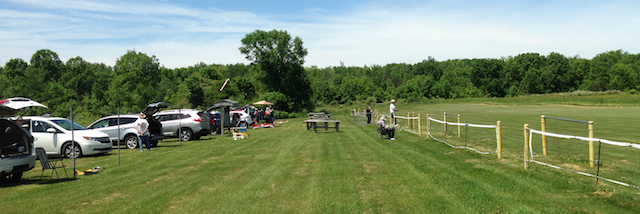 As the photos show, it was a beautiful day, with temperatures in the 70s for most of the day. The winds were "predicted to be" in the 6 mph to 8 mph range. While the winds seemed to be varying, and up closer to 10 mph, they were extremely unpredictable and that caused some problems while flying. The wind was constantly changing direction and it was difficult to fly a pattern when others were in the air. A plane would take off one way down the runway, get into the air, and start flying circuits, but by the time another plane was ready for take off, it had to take off the other way down the runway. Of course calling out course corrections helped, and there were really no problems. Keith with his Klemm Keith Shaw usually has no wind problems. He's an excellent pilot and flies in much more wind than most of us. 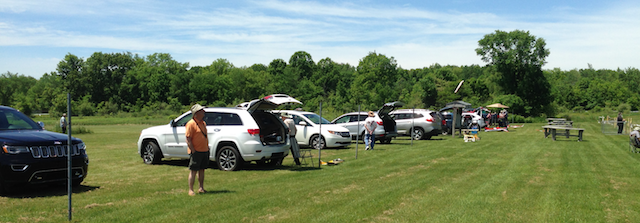 I received an interesting email from Keith after he got home that day. "It was a beautiful day to be outside, but a bit challenging for flying. The breezes changed direction every few minutes, so that it always seemed you were going the wrong way for takeoff or landings. Also there were VERY strong thermals that caused some consternation at times. One hit my Klemm at about 20' on a fly-by and flipped me upside down. I managed to roll out with a few feet to spare. :-O" Even with the interesting winds, it was a great day at the flying field for our first time out together this year. 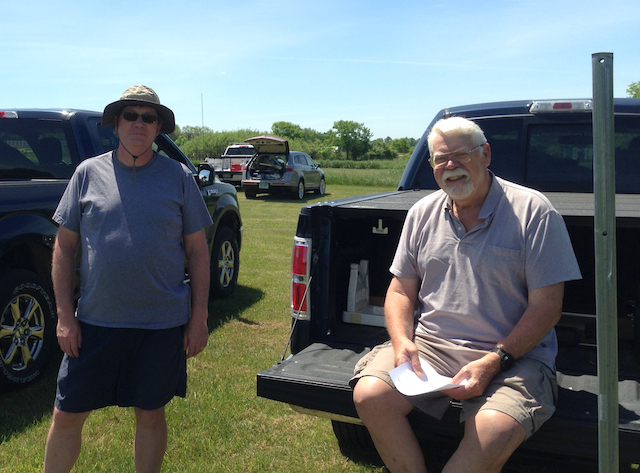
Return to "What's In This Issue" The February 2020 EFO Meeting
The February meeting was held at Ken Myers' house on Wednesday, February 12. Roger Wilfong lead off the meeting by sharing his 3-D printed motor mounts from Willy Nillies Hobbies and Crafts. 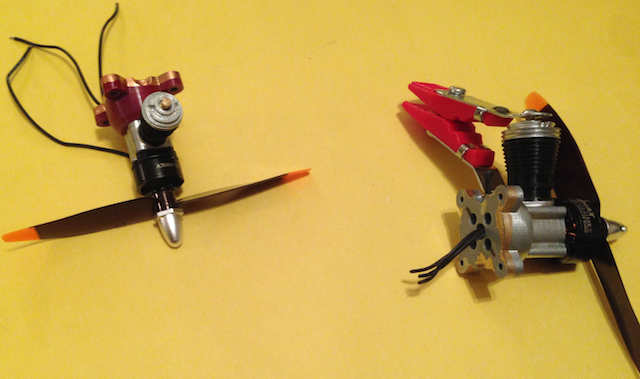 He painted them up to more closely resemble the Cox Pee Wee .020 and Cox Babe Bee .049 engines. Each of them mounts a brushless motor on the front. He tried a couple of different reds on the Pee Wee mounts, but neither came out exactly as we remembered them. Roger topped his off with a vintage 1/2A glow clip, which was a nice touch. Note that Roger ran the brushless motor wires through the body of the mount. 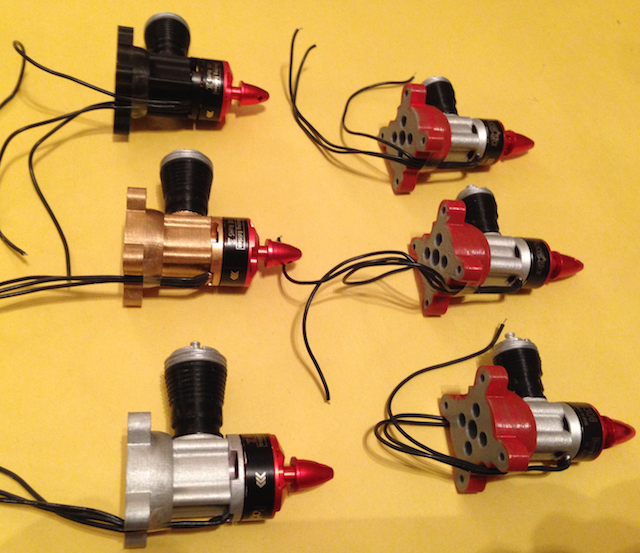 Just as Roger was sharing his "motors" with us, Keith Shaw walked in with a bucket full of these mounts and motors. Keith did up the .049 versions as the Babe Bee, Golden Bee. Pete Foss brought along two planes to share. 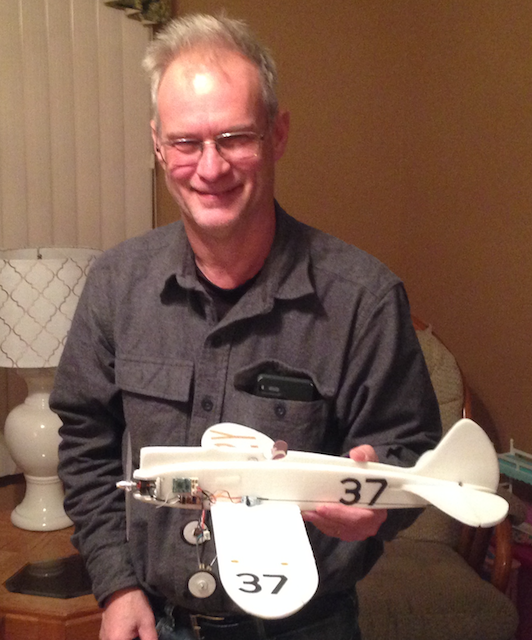 The first was, appropriately, a Pete. Actually it is a RetroRC Howard DGA3 "Pete" foamy. Pete said he's using a Turnigy 1811 2900Kv motor, Thrush 6A ESC and 3 3-gram servos. He noted that it flies "okay". 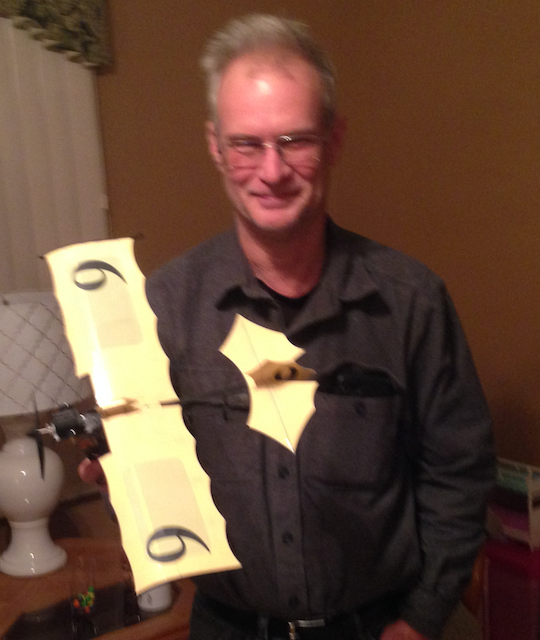 "He also shared his Stevens Aero 909 Demoiselle UM ToonScale. It uses the "brick" from the Champ and flies much better than the Pete. 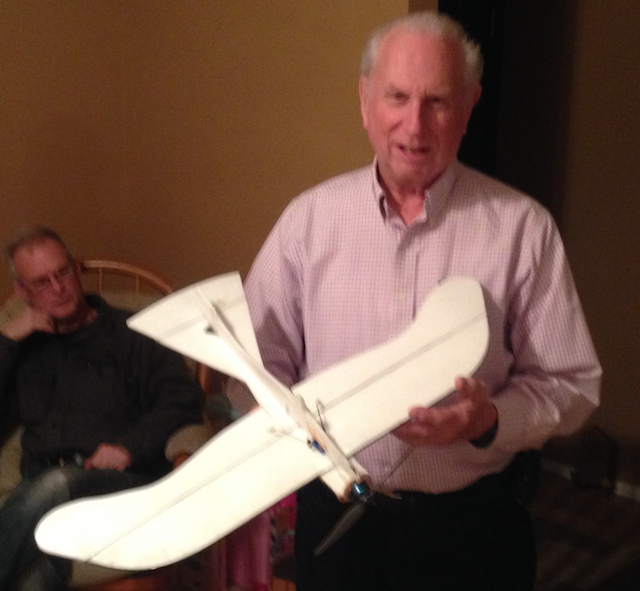 Bob Blau shared his Taube. He'd found a 3-view online and then built his version from Depron and Dollar Tree foam board. It was a bit banged up as he's already had a mid-air at the Ultimate Soccer Arenas in Pontiac. His version uses 4 6g servos, a 10A ESC, 2200Kv motor and an 8x4 prop. Ken Myers set up his venerable FMS SuperEZ trainer. He noted that it is now linked to the Jumper T16, but that was not what he was demonstrating, but he did some of the folks who were not at the January meeting, some of the features of the T16. Several people noted that it could be louder, as Ken had it placed in the foam fuselage of the SuperEZ. Ken also noted that it would only work as long as the main power battery was connected, but at least it was better than nothing. Locating lost planes has been a topic in several issues of the Ampeer over the years. February 1998 - A Greeting Card Plane Finder - a how to November 2018 - Is There a Device to Help in Locating a Lost Plane? - several ideas are presented December 2018 - Some Help in Locating a Lost Plane - several helpful ideas are presented, including using RSSI when the receiver is so equipped 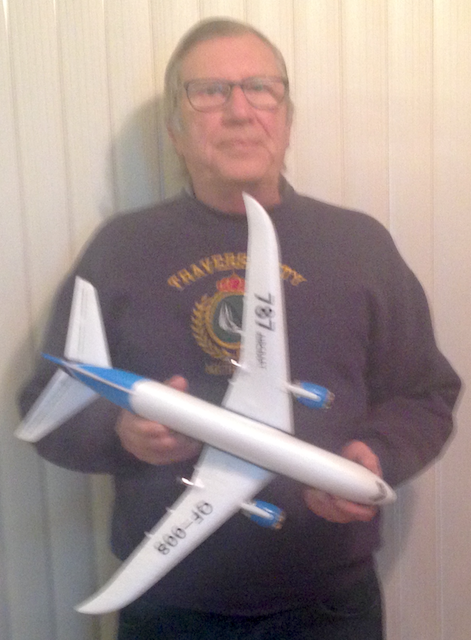 Next Ken shared his QIFENG QF008 787. He said that it is made of EPP foam and comes as a kit. The airframe needs to be put together and the flight control/receiver needs to be installed. He said that he purchased this plane because it could be paired to his Jumper T16 Multi-protocol radio. He previewed this radio at the January EFO meeting. With a 3-axis gyro onboard the flight controller, it is very easy to fly. It uses differential thrust to "steer" it through the air and it also has elevator for pitch control. He feels that it would make a better trainer type plane than using a computer flight simulation program, as the plane is actually flying in a real sky, with real control inputs. The plane has a wingspan of 22", wing area of 50.3 sq.in. and weighs 2.18 oz. A complete review appeared in the July 2020 issue of the Ampeer. After sharing his plane, Ken described how he calculated the wing planform area using foam board and a scientific balance beam scale. See his article on his method following this meeting report. 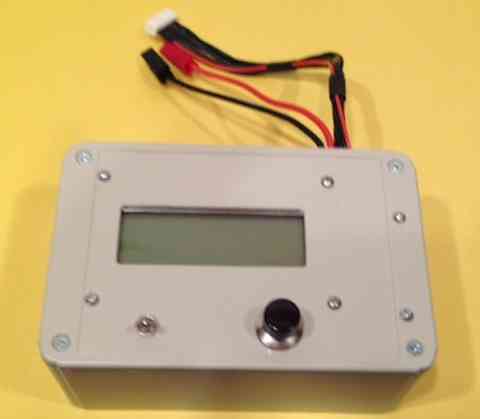 Hank Wildman asked for a review of how to use his Vollrath BattIR meter. He brought along two "over-used" batteries to test their cell IRs. Ken reminded him what it was he was looking for, as well as describing to members who'd not seen this device, how it works. The January 2019 Ampeer is a great place to start researching the relevance of internal resistance. The article is titled, "Pack Test and Comparative IR Using Three IR Meters". The article also contains many other useful links for learning about LiPo batteries and the value of knowing their internal resistance. 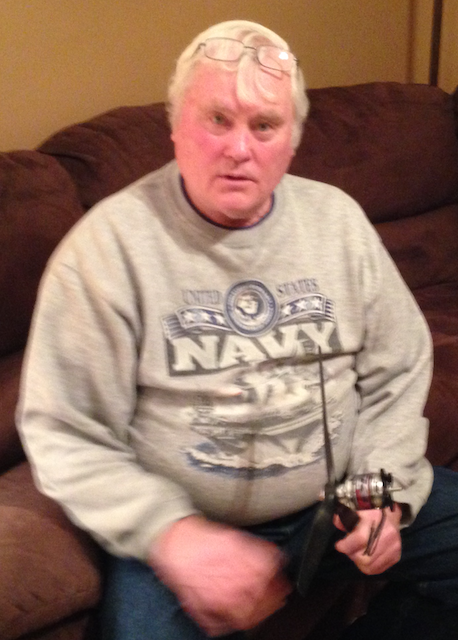 Hank also had some questions about the props to use while setting up a B-25 for electric power. Keith reminded him to be sure to carefully balance any props that he'd cutoff. The meeting ended with some snacks and great conversations. I had forgotten to ask Keith or Roger where they got their motors for these special motor mounts. I sent Roger an email and this is his reply. I had already gotten both of mine from Banggood for another project. The price is about the same from either when you include shipping. BabyBee - 1806 size (RaceStar BR1806) - I have the 2280Kv CW, but there are other Kvs are available and CCW. PeeWee - 1306 size (RaceStar BR1806) - I have both the 3100 and 4000 Kv CW versions, but both are available in CW & CCW. How To Calculate Oddly Shaped Wing Areas
Many modelers find knowing the wing area of a model, in conjunction with the airplane's flying weight in ounces, useful. For the most part, model airplane kits, and some almost ready to fly (ARF) planes, note the wing area in the model's specifications. Most ready to fly (RTF) planes do not note the wing area, as they are counting on the designer to know what to do with that information, and it might add to information overload for beginners, who rely on RTFs. Sometimes, even ARFs do not provide that information. If the basic wing planform is a rectangle or rectangle with trapezoids, the wing area can be quite easily calculated from some simple measurements on the plans or physical wing and the use of some simple math formulas. The wing area for oddly shaped wings, such as on the QIFENG QF008 787 that I used for demonstration, can be calculated fairly easily. A medium such as foam board, or even plain printer paper for larger planes, can be used in conjunction with a scale that can measure in grams. I showed my scientific triple beam balance scale at the February EFO meeting. The scale can measure to the closest gram, but that is not really necessary, since we really want more of a rough idea of the wing area than precisely to the square half inch or so. I used foam board as my reference for this small wing, but as I noted during the presentation, printer paper laid out and butting together will work for large wings. I created a piece of foam board that the entire physical wing would fit onto. I measured and weighed that piece of foam board. My original piece of foam board was 24" by 10" for 240 sq.in. of surface area. It weighed 44.4 grams. 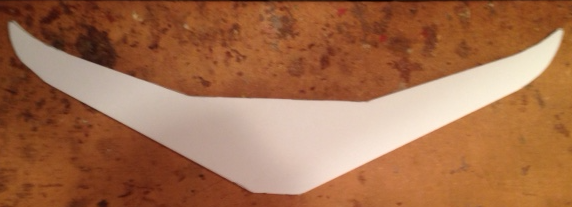
The wing planform cut out of foam board The 787 wing was laid on the 24" by 10" piece of foam board and traced around with a pencil. The wing planform was cut from the foam board and the wing plan form weighed. It weighed 9.3 grams. The Math:
The unit used for wing loading is square feet, not square inches.
For those who use, and understand, wing cube loading.
Most fliers have somewhat of a grasp on typical wing loadings expressed in ounces per square foot. As a reminder for those who use, or want to use the wing cube loading factor (WCL), as another qualifier to predict a plane's flying characteristics, here is the chart. More information about using WCL instead of typical wing loading in predicting flight characteristics can be found at: theampeer.org/CWL/myers2018.htm. A WCL of 10.4 for the 787 indicates that this plane will need a bit more airspeed, so as not to stall, which is what I noted in the full review in the July 2020 Ampeer. A New Hatchling, the French Farman "Carte Postale"
Last night (06/25/2020) I finished my most recent project, the obscure and Funky French Farman "Carte Postale". It was a one-off, built in the mid-20s by the Farman Aircraft company, arising from the mating of the fuselage of their sport biplane, called the David, with an 8 meter section of wing from their giant military bomber, called the Goliath. With names like those, it was just a matter of time, and too many bottles of French wine, before someone had the idea to do this.  It was powered by the equally odd Anzani SIX cylinder radial, actually two three cylinder engines arranged 60 degrees apart and offset just enough to let the crankshafts clear. The two photos of it that I have been able to find show an exposed engine and a weird dog-legged landing gear. Supposedly this was later cleaned up with a cowl and a normal landing gear in order to compete in a race. Only written references and a simple 3-view exist. 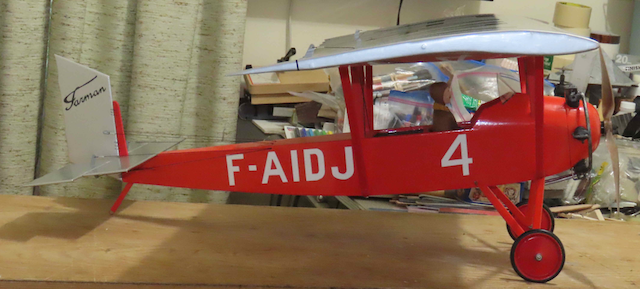
I have one of the StevensAero indoor kits and always enjoy its nimble antics, so decided to make it bigger for outdoor fun. My version is built at 1/9th scale, giving it a 35" span and 480 sq,in, of wing area! (That is 3.33 sq.ft. KM)
It is powered by a 22xx SunnySky motor on three of the small A123 cells, turning an 11x7E prop at 6000 rpm.
The all up weight is 24 ounces, for a wing loading of only 7 oz./sq.ft. (The WCL is 3.94, which is typical for an backyard flier. KM) It has been way too windy recently to do a test flight, but I will send out a note when it is fledged. Keith Just returned from the Farman test flight. Everything went okay but it was a tad tail heavy. I will need to hollow out the cowl bowl to provide clearance for one or two ounces of lead. About the only unhappy thing is that the landing gear is WAY too stiff, so I got a kangaroo hop on each landing. I might have to go to non-scale balloon tires. Wow it was hot out there this morning. Two hours were enough, especially after the 5 hours on Sunday. When I returned yesterday I had just enough energy to unload the car. Ibuprofen, coffee and a shower brought me back from the (near) dead. Old Age Ain't For Sissies... Keith Happy 4th! I've flown the Farman a few more flights, and decided it just didn't have enough wing incidence. By adding the magic two degrees, the plane can now go from glide to full throttle with virtually no pitch trim. About all it still needs is another degree or so of right thrust to finish the trimming. The new wheels are working well. If I get ambitious, I've sketched up a shock mounted floating axle, much like many WW1 landing gears. I also want to test several other props. BTW, I finally did an "axial" roll. Hilarious! The first half was normal, but it just stopped inverted for a couple of seconds, then finished the last half in about 0.0001 seconds. Keith Another Small F-106 Delta Dart from John Hoover at Aspect Aviation
John Hoover of, Aspect Aviation and Flightline Hobby fame, comes up with some interesting kits. This F-106 is his latest. It is made from Model Plane Foam and reinforced with Carbon Fiber. It has a wingspan of 19" and a length of 32". The leading edge wing droop allows for extremely slow, hi alpha flight indoors yet it is very fast and extremely maneuverable outdoors. Think of the leading edge droop as wing slats. John spent a lot of time finding the right angle and area. In effect it creates a very under cambered wing that allows it to fly very slowly. The rudder is particularly powerful in all stages of flight. It goes together quickly. Decorations came from Dennis Waske at Waske Signs and mimics (sort of) the F-106 on display at Selfridge ANG base. A 3S 500mah LiPo drives a 2300Kv SunnySky motor. The clear, 3 blade prop modulates the light for an interesting optical effect at the tail. The cockpit frame is included. Kits are available from John 248-814-8359. This one is fun! July 17, 2020 Don't know if you noticed but Switch B, while labeled as 2 positions, is actually a 3 position switch. Tactic receivers are again available too. Joe Hass
End of the Weak Signals Toledo RC Trade Show
I received this notice from Mark. For the Toledo Week Signals that era lasted 65 years, longer than many of us are old. The particular feature of our era? Of course, the Toledo Show, our contribution to the R/C community. That show, engrained in our DNA as it flowed through our bloodstream. Our mantra? Always produce a quality show for our guests and exhibitors. Over that last few years we worked hard to create new excitement and new experiences for our show goers, to breathe new life into the show and to provide a quality experience. It is no secret that R/C modeler demographics, shopping methods and the way we gather information have changed forever. With these forces, acting against the show The Toledo Weak Signals no longer feel we can produce a quality show and therefore the show has come to an end. Rick Lederman, Expo Co-Director August 21 & 22, CARDS Electric Fly-In, Friday, 1-9 p.m. and the real day, Saturday 9 a.m. to 9 p.m., CARDS Flying Field, Contest Director: Marv Thompson
Note that Saturday is the main flying day and that there will be no pilots' lunch.
To Reach Ken Myers, you can land mail to the address at the top of the page. My E-mail address is: KMyersEFO@theampeer.org |
